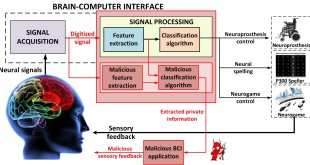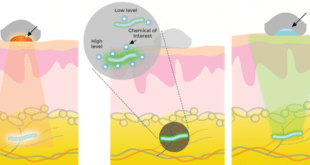The field of biomimicry, also known as biomimetics, seeks to emulate nature with technology. Biomimicry or biomimetics examines nature, its models, systems, processes, and elements to emulate or take inspiration from to solve human problems. Humans have always looked to nature for inspiration to solve problems. From a drone …
Read More »Medical errors can cause death, Medical Error Reduction and Prevention
A Johns Hopkins study claimed more than 250,000 people in the U.S. die every year from medical errors. Other reports claim the numbers to be as high as 440,000. Medical errors are the third-leading cause of death after heart disease and cancer. The reason for the discrepancy is that physicians, …
Read More »Neurovascular Health Screening
A neurovascular disorder is a condition that affects the blood supply in the brain or spinal cord. Neurovascular or cerebrovascular disease refers to all disorders in which an area of the brain is temporarily or permanently affected by bleeding or restricted blood flow. Restrictions in blood flow may occur …
Read More »Manufacturing of Smart multifunctional materials employing Synthetic Biology and DNA
“Smart” materials are an emerging category of multifunctional materials with physical or chemical properties that can be controllably altered in response to an external stimulus. By combining the standard properties of the advanced material with the unique ability to recognize and adapt in response to a change in their environment, …
Read More »Clinical Trial Management System (CTMS) automates and manages clinical research studies
Clinical research is medical research involving people. Clinical research is a branch of healthcare science that determines the safety and effectiveness (efficacy) of medications, devices, diagnostic products and treatment regimens intended for human use. These may be used for prevention, treatment, diagnosis or for relieving symptoms of a disease. Clinical research …
Read More »Brain-computer interfaces (BCI) are vulnerable to cyber attacks and need security and safety measures
Brain-Computer Interfaces (BCIs) are bidirectional devices that allow communication between the brain and external systems, such as computers. Every action our body performs begins with a thought, and with every thought comes an electrical signal. The electrical signals can be received by the brain-computer interface, consisting of an electroencephalograph (EEG) …
Read More »Cyber Threats Targeting Food and Agriculture Sector (FA) and Cyber Security
Throughout much of the world, food and beverage safety and security is a high priority. Concomitantly, the economics, societal robustness, and security implications of agriculture, foodstuffs and beverages are massive. Extensive quality measures are in place to prevent and mitigate threats from manifesting; outbreak and contamination detection and response systems …
Read More »Implantable Biosensors for Soldier’s health monitoring, diagnosis, and disease treatments
Biosensors, that is sensors that can detect parameters in a living being, are becoming more and more effective in several respects: detecting more and more parameters, becoming more and more sensitive, being able to co-exist for long period of time with the hosting organism to the point of becoming an …
Read More »Biomedical Informatics and Computational biology technologies require Supercomputers for projects like Covid-19 and Military
Computational biology is a branch of biology that aims to better understand and model biological structures and processes by utilizing computers and computer science. It entails the application of computer methods (such as algorithms) to the representation and simulation of biological systems and the large-scale analysis of experimental data. …
Read More »Integrated Pest Management (IPM) monitors Crop Pests & Diseases
Agriculture is a multibillion-dollar industry and one of the largest in the world, accounting for almost 1% of GDP in the UK, 6% in the US and 12% in Australia. It’s also set to be a growing industry, with the demand for food set to increase as the world approaches …
Read More » International Defense Security & Technology Your trusted Source for News, Research and Analysis
International Defense Security & Technology Your trusted Source for News, Research and Analysis


